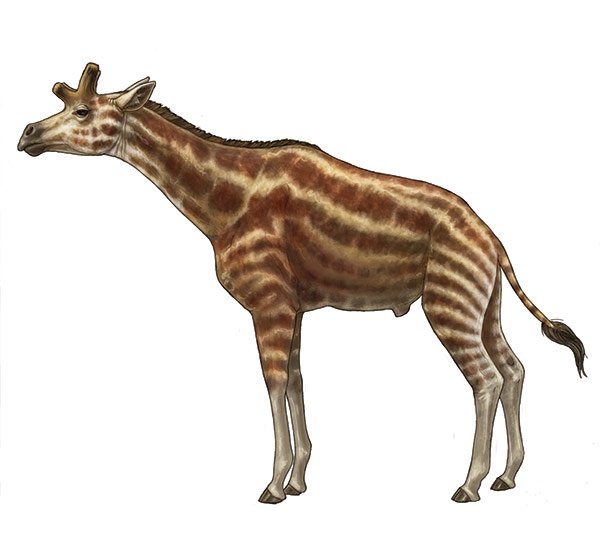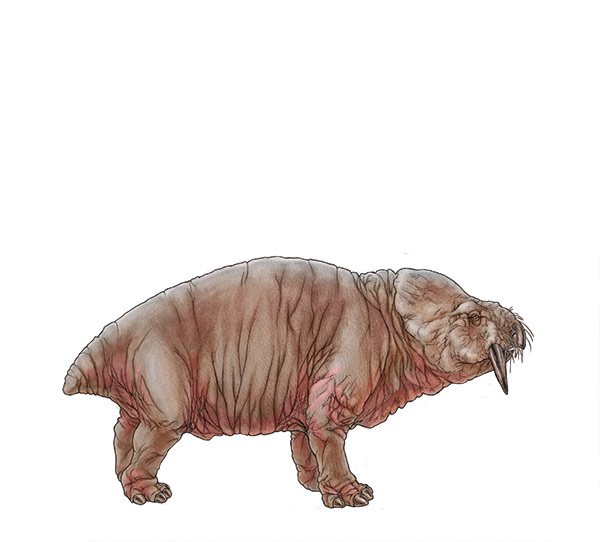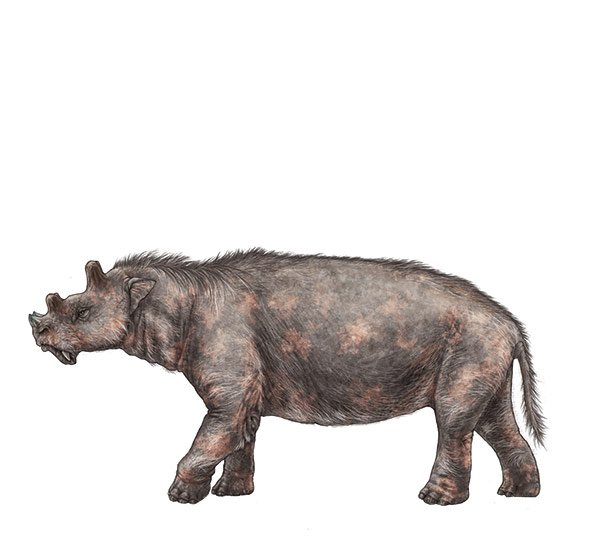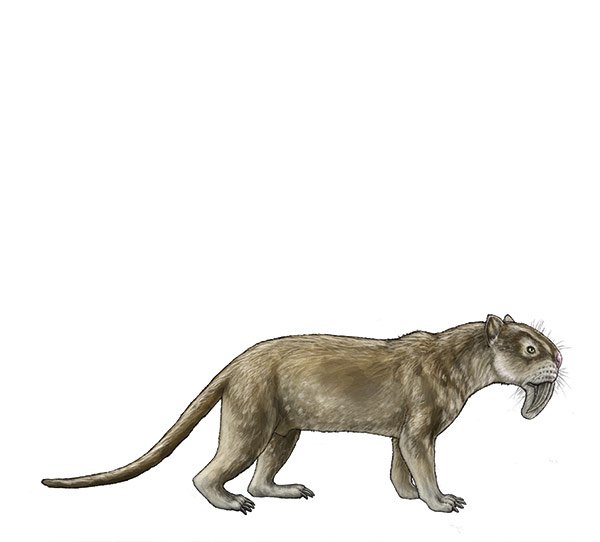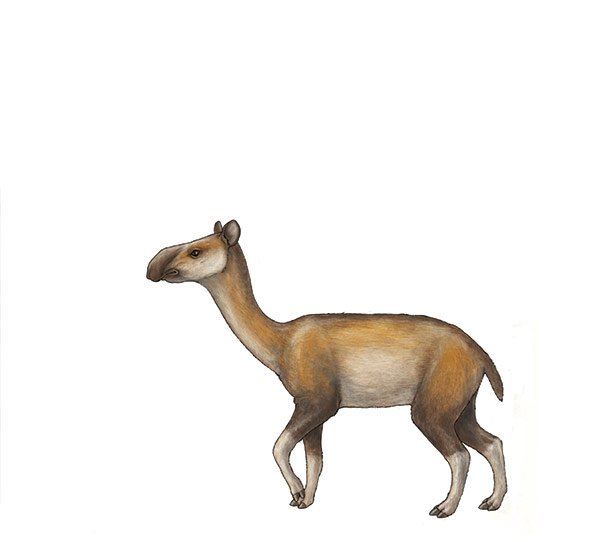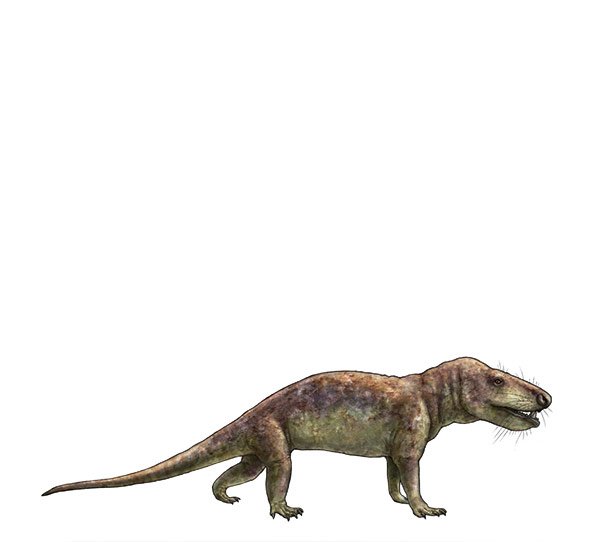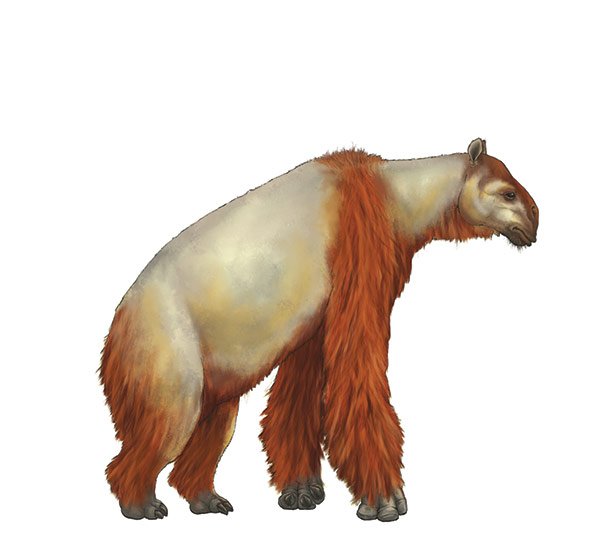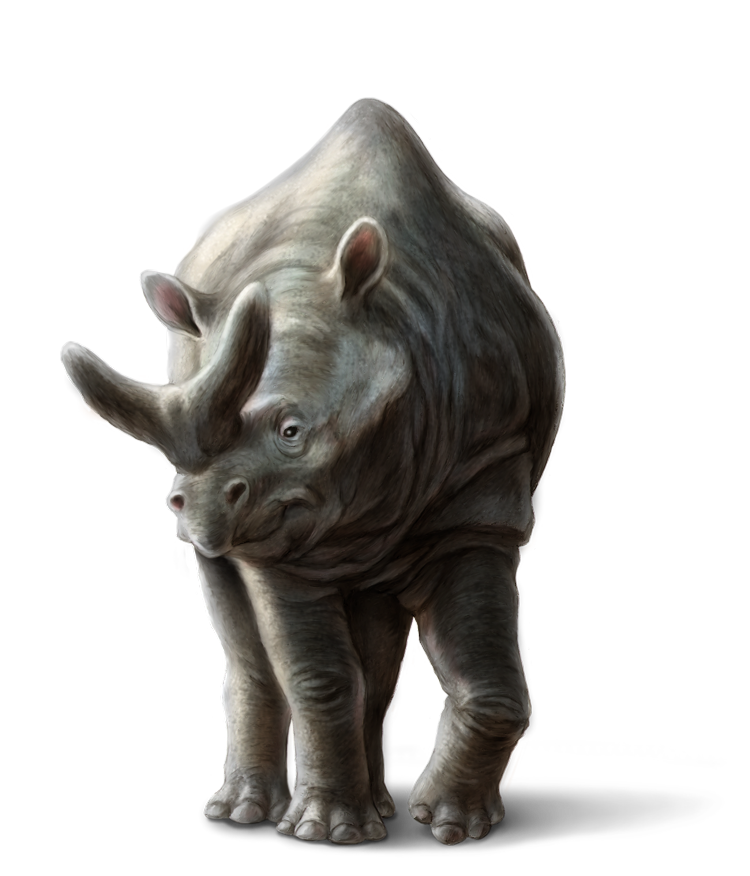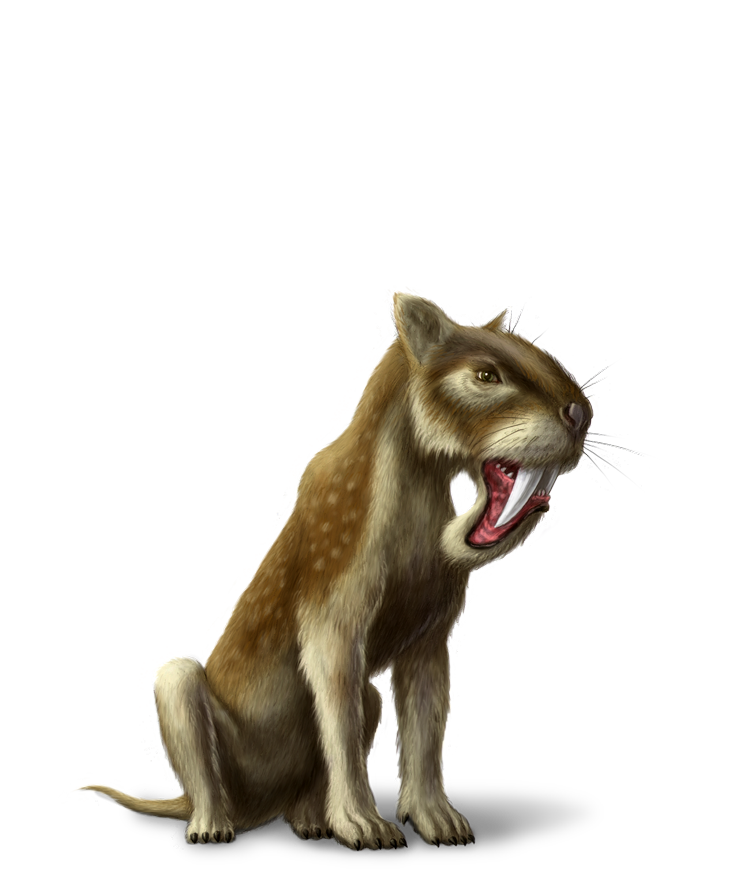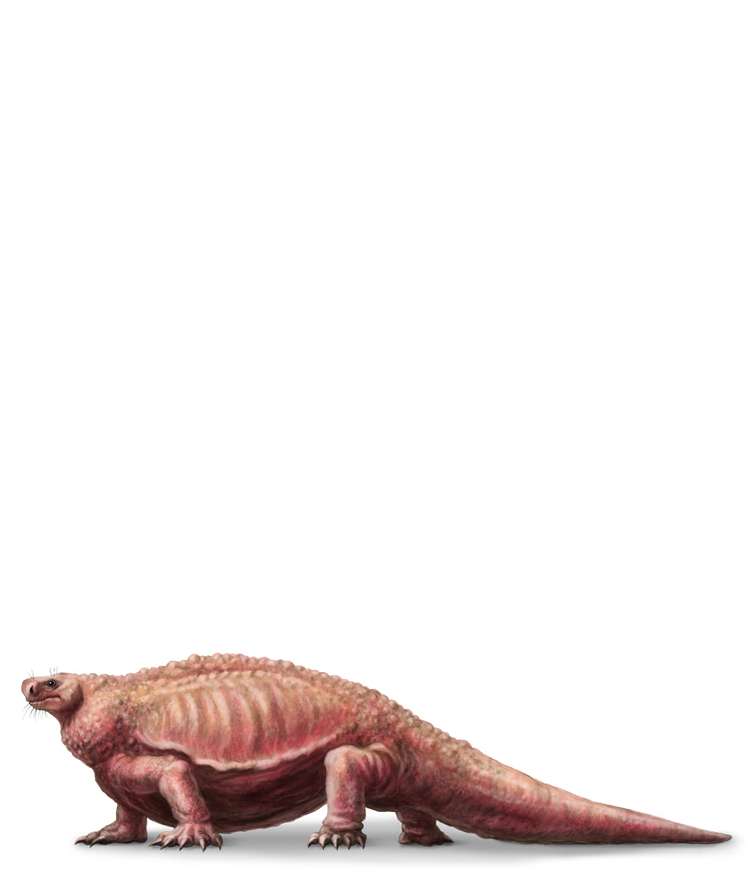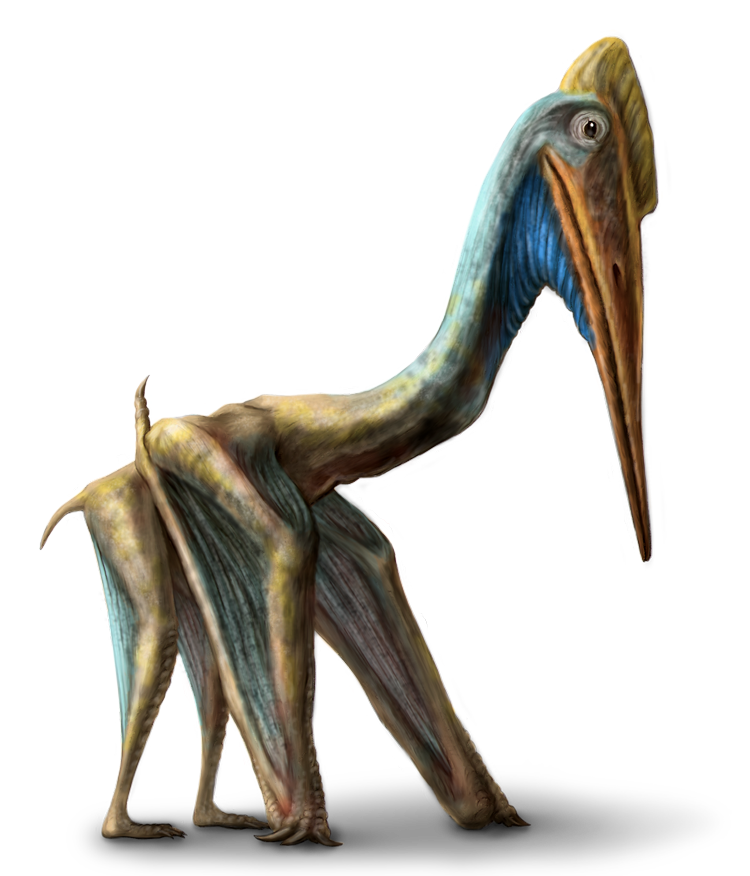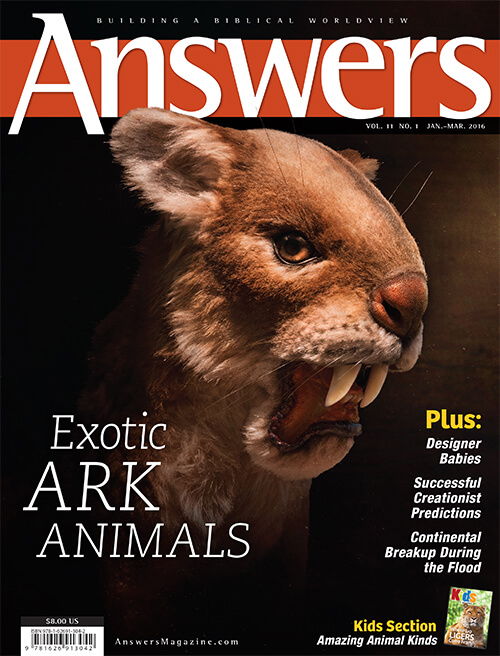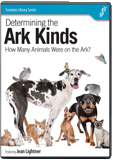Reimagining Ark Animals
Our exposure to an abundance of Noah’s Ark illustrations and toys leads people to imagine the Ark filled with lions, tigers, giraffes, and more. But be careful. Beneath these drawings is a faulty assumption that the creatures on Noah’s Ark looked like the ones we see today.
From early childhood most of us have been familiar with some version of Noah and the Ark. Nursery mobiles and church wallpapers typically display adorable and cuddly elephants, giraffes, and lions along with a cute little boat. Children’s storybooks often add pandas, anteaters, or other exotic animals from around the world, which expand our vision of the Ark’s wonders.
It’s usually not until later in life that we begin to carefully read the details of the Genesis account of the Flood and discover just how big the Ark really was. But the thrill of discovery doesn’t end there.
As we learn more about animal classifications from biology class, our simplistic mental picture of the Ark gets shaken up even more. We discover that many related species belong to the same family and can breed together. The Bible says God sent “kinds,” not species, onto the Ark. What if that pair of prancing horses in our favorite Ark illustration never stood next to a pair of wild zebras? After all, both are equids and can breed together; so both must belong to the same kind. Genesis 6:19 says God sent only one pair of each (unclean) kind onto the Ark.
The surprises don’t end there. As we learn about extinct animals like dinosaurs, we realize that Noah must have brought these fascinating creatures on board, too. It seems the more we learn about the world and consider how the Bible makes sense of it all, the more our vision of the Ark grows.
Yet, no matter how much we may have thought about this topic, our mental picture of this historical event likely has room for further upgrading. For example, do we know what the Ark giraffes really looked like?
It’s human nature to assume that everything has always remained essentially the same, but the Bible tells us that’s not true. Many things have changed on the earth, and that includes giraffes. Both evolutionists and creationists agree that the oddly colored, short-necked okapis of the forests in the African Congo belong to the same family as giraffes. So their original parents probably didn’t look very similar to either species. But what did the Ark kind look like?
It’s not as simple as combining features of surviving members of the family. We must also consider extinct species within the giraffe kind. While modern giraffes have furry little bumps on their heads, called ossicones, some of their extinct relatives possessed branched ossicones that looked more like deer antlers. If the Ark giraffes had ossicones, what would they have looked like?
The original appearance of modern animals is not the only concept needing adjustment. Most of us know about dinosaurs, but have you ever thought about the hundreds of other, less-familiar animals that were also represented on the Ark but are now extinct?
What a menagerie that must have been! The possibilities boggle the imagination. The Lord gave us the privilege to explore these possibilities as we oversaw the choice of animals that appear in the Ark Encounter, an outreach of Answers in Genesis here in Kentucky. Our goal is to inspire visitors to think outside the box. Way outside the box! We want them to imagine the true diversity of animals within each kind, which testify to the Lord’s infinite wisdom and creativity.
The Survivors
Every land-dwelling, air-breathing animal in the world today owes its existence to its Ark ancestors. Based on fossils of some animals, such as the platypus, the modern representatives do not seem to be very different from the pair Noah cared for. However, due to the remarkable genetic diversity and adaptability within many of the kinds, most animals have gone through great changes since the Flood, to the point that some Ark kinds may be nearly unrecognizable.
Cats of the Cataclysm
The cat kind provides a great example of the diversity God placed within the created kinds. Many Ark illustrations show lions, tigers, and other large cats boarding the Ark, but this concept is mistaken. All of these large cats are members of the same created kind, so Noah did not bring two tigers, two lions, etc. In fact, Noah needed a total of only two cats—studies have shown that all cats are part of the same created kind. This would include modern alley cats, the famous saber-toothed cat (Smilodon), and many other large cats, whether living or extinct.
With such a wide assortment of traits within the felid kind, the task of determining the look of the Ark Encounter’s cats required extensive research. We paid close attention to the fossil evidence of the cats buried in rock layers laid down soon after the Flood, as determined by the Creation/Flood geology model adopted by our research department. These fossils likely give us a better idea of the size and structure of cats living within the first few centuries after the Flood.
Figuring out the size and shape is only part of the challenge. Cats have a wide array of coat patterns and colors, which are seldom preserved. They can have wide or thin stripes, large or small spots, or they can be a solid color or multicolored. One study concluded that small spots may have been the ancestral pattern of all other coat colors and designs.
Not Your Pet Dog
The canid (dog) kind presented an interesting challenge. Their variety of shapes and sizes is extraordinary. Think of the tiny Chihuahua and the massive Great Dane. Now add coyotes, wolves, dingoes, jackals, and extinct subfamilies such as Hesperocyoninae and Borophaginae. How could we ever decide how to depict the Ark dogs?
A recent study on the Ark’s mammals, published in Answers Research Journal, concluded that foxes are even part of the dog kind, despite large differences in chromosomal numbers. Although no known crosses between dogs and foxes exist today, their anatomy is very similar, and a handful of seemingly reliable reports of hybrid “doxes” were recorded in the past two centuries.
Once again, the fossil record is indispensable. At the Ark Encounter, we modeled our dog after Hesperocyon, an extinct canid thought to have given rise to the three major subfamilies of Canidae. Weighing less than four pounds and boasting a tail as long as its slender body, our dog surely looks different from what most people expect.
Extinct Critters
God sent Noah representatives of more than the familiar cat kind, dog kind, and giraffe kind. Many other kinds are no longer alive today, but we have discovered their fossils. The remains of some animals have been found in rock layers we believe were deposited in the centuries after the Flood. Others, like the dinosaurs, are known only from sediments laid down during the yearlong Flood. When reimagining the animals on the Ark, we need to consider remains from all these layers.
Evidence Surviving after the Flood
Biblical creationists believe that the global Flood caused the Ice Age. So people often assume that the famous Ice Age animals—mammoths, woolly rhinoceroses, saber-toothed cats, giant ground sloths, and giant apes—were on the Ark. But saber-toothed cats, for example, belonged to the same kind as modern cats, so the earlier Ark representatives probably looked different from both. Likewise, these other Ice Age creatures were not on the Ark either since they belonged to broader kinds that were brought on board.
Interestingly we find other catlike animals that were not related to cats at all, so we must include these as separate kinds. For example, based on fossils found in South America, Thylacosmilus looked like a saber-toothed cat, but it is classified as a metatherian—a category of animal that includes the pouched marsupials. A member of the thylacosmilid kind, this predator sported two long saber-teeth and may have weighed up to 260 pounds (118 kg).
Thylacoleo belonged to another animal kind (Thylacoleonidae) that looked like a cat, but as a marsupial it kept its young in a pouch. Armed with a powerful bite, Thylacoleo stalked prey in Australia during the Ice Age and may have surpassed 350 pounds (159 kg).
The South American “terror birds” known as phorusrhacids, are rarely, if ever, imagined among the Ark’s animals. Yet they are found in post-Flood sediments and must have had ancestors on the Ark. While Noah probably tended smaller examples, the largest of these predators stood nearly ten feet tall with an 18-inch (0.5 m) hooked beak.
One of the most bizarre mammal kinds on the Ark was the chalicothere kind. The largest of the beasts in this family, Anisodon grande, stood up to 8.5 feet (2.5 m) at the shoulder. Its front limbs were much longer than the back limbs and ended with palms turned inward, indicating they walked on their knuckles. Certain members of this family even sported bony crests on their heads.
Evidence Missing after the Flood
In addition to these weird and wonderful creatures that left fossilized remains after the Flood, several extinct kinds are known only from Flood deposits. Still, we can be confident that representatives were aboard the Ark because the Bible indicates that all kinds of land-dwelling, air-breathing animals were spared.
Many of the animals in this category are well-known and loved—especially by little boys (and big boys, too). Who hasn’t heard of the powerful Triceratops and the mighty Tyrannosaurus, the soaring Pteranodon and the earth-shaking Brachiosaurus?
These animals were more than the stuff of legends.
But the beauty and diversity of extinct pre-Flood fauna extended beyond the famous dinosaurs and flying reptiles. Alongside our picture-book stars ran other weird creatures that look as though they stepped out of a fantasy film!
With some members reaching over 30 feet (9 m) in length and weighing an estimated 5 tons (4.5 m. tons), therizinosaurs were among the strangest dinosaurs. These pot-bellied, bipedal plant-eaters featured three giant claws on each hand. The longest claw may have reached three feet (1 m) in length and been used for defense or stripping leaves from trees. Every kind of dinosaur in the picture books was represented on the Ark.
The Ark also carried representatives of all the other so-called “prehistoric” reptiles, birds, and amphibians, if they were unique from other known kinds. Simosuchus was a pug-nosed, short-tailed, crocodile-like reptile. At maturity, these animals were less than 3 feet (1 m) in length and covered with bony plates, called scutes. They were apparently plant-eaters, exhibiting leaf-shaped buckteeth set in boxy skulls— not what you think of when you hear “crocodile.”
To expand our perspective of the Ark’s animals, we need to consider thick-beaked birds with long spoon-shaped tail feathers (Confuciusornis). And 30-foot-long amphibians (Prionosuchus). And mammals known to have eaten small dinosaurs (Repenomamus). And four-legged snakes (Tetrapodophis). And bizarre synapsids like Estemmenosuchus and Cotylorhynchus, land-dwelling animals that were neither mammals nor like living reptiles.
Based on recent discoveries, some well-known dinosaurs may have looked different from how we’ve envisioned them in the past. For example, some species of duck-billed dinosaurs (hadrosaurs) had fleshy combs on their heads. Some psittacosaurs (beaked dinosaurs that in some ways resembled a small Triceratops without a frill or horns) had patches of tall bristles on their tails. Some spinosaurs (the sail-backed predator popularized by Jurassic Park 3) were so front-heavy they probably couldn’t walk on their back legs alone.
Endless Fascination
The more we find out about these extinct animals, the more fascinating they become. These creatures were more than the stuff of legends. They were real. Only a few thousand years ago, they walked around in this same world of ours. What’s even more amazing is that each of these kinds was successfully preserved in a massive wooden ship built by our ancestor, Noah.
The spectacular menagerie of beasts on the Ark was considerably more diverse than any of the world’s zoos. Incorporating all of the extinct land animals on the Ark greatly enhances our picture of what Noah may have experienced daily in caring for them.
Contemplating the vast array of animals leads us to recognize the severity of mankind’s sin. Even though God graciously spared the Ark kinds from complete destruction in the Flood, roughly half of the land-dwelling, air-breathing kinds have since gone extinct trying to survive in this sin-cursed world. Our hearts yearn for the day that our gracious Creator will deliver His creation from the bondage of sin’s corruption.

Answers Magazine
January–March 2016
Discover the role of ancient Near Eastern writings in understanding Scripture and learn about some exotic animals that can only be explained by a Creator.
Browse Issue SubscribeRecommended Resources

Answers in Genesis is an apologetics ministry, dedicated to helping Christians defend their faith and proclaim the good news of Jesus Christ.
- Customer Service 800.778.3390
- © 2024 Answers in Genesis



